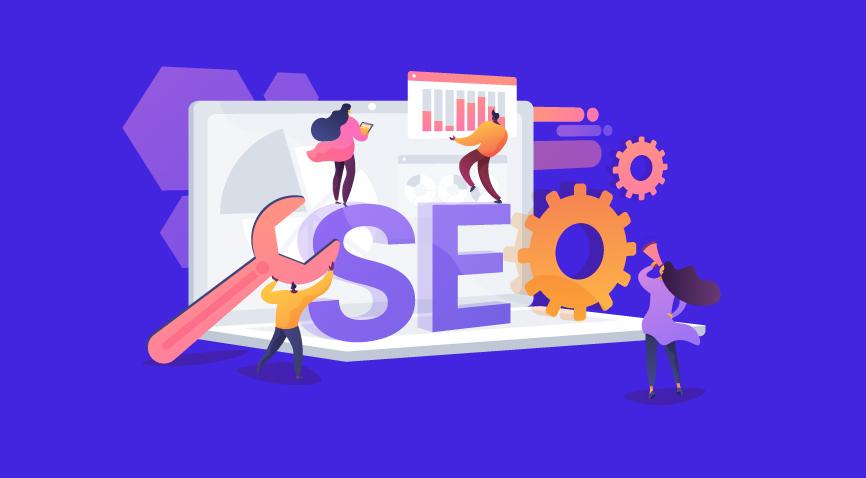
Search engine optimization (SEO) is commonly considered a complex set of functions that is dreaded by many. Most know the importance of SEO and the traffic it can bring to our website; however, not many know how to increase website traffic organically using SEO. Moreover, the fact that the algorithm is constantly evolving doesn’t make it any easier. So, when we tell you that you can improve your website SEO in under an hour, disbelief is a natural reaction. In this post, we will give you tips on how to improve website SEO. Read on.
SEO and Its Parameters
SEO is a methodology to make a website search-friendly. It has come a long way since it was first introduced; however, the core principle of showing the most relevant results to a user remains the same. There are multiple factors that are taken into consideration when a site’s search friendliness is considered. Factors such as unique, SEO-friendly content, link building, and keywords, are some of the most important ones.
While there are more than 200 SEO ranking factors that help Google determine page rank, we will touch upon some quick tips that you can implement in under an hour to improve your website SEO to boost traffic.
How to Improve Your Website Seo In 6 Easy Steps
When creating any digital content, it is imperative that you make it SEO-friendly. Here are a few quick tips on how to increase your website SEO.
1. Keep a clean URL structure
When a website is created, we focus a lot on the design, look and feel, etc., but forget to look at its URL structure. The domain name chosen by you is the website URL. A simple way to make it search engine-friendly is by including the business purpose in the name.
Apart from this, the inner pages have a URL that is visible in the browser. In SEO website design, URLs with numbers, special characters, hashtags, etc., are not SEO-friendly. An ideal URL structure would be www.yourname.com/pagetitle. You can modify the structure and include keywords in it while renaming it. Long URLs with too many keywords, too, are not considered ideal. Focus on the theme of the page and use one relevant keyword.
Remember to create a redirect link if you are editing the URL of a published page. For future pages, remember to check the URL structure before publishing it. There are a few plugins available to help you with this task, if you are using a WordPress theme.
2. Improve the meta tags
Meta titles and meta descriptions are some of the important snippets of information that a search engine sees about your website. It should ideally give a clear idea about your web page and its purpose. Include a couple of keywords here to improve your website’s search engine relevance.
If you have seen a search engine result, you will find a bold heading and a couple of lines of description under it. This is the meta title and meta description that you add for every page. Apart from the relevance of the meta tags, it is important for the searcher to decide if the page is relevant to their needs. Including relevant search terms in these will make the user click on your page, as they will match the search intent.
3. Optimize your site speed
Page speed is an important SEO factor. In recent years, Google has been emphasizing user experience, and a slow site is never a great experience. According to recent studies, it was observed that site speed has a direct impact on conversions, with conversion rates dropping by an average of 4.42% with each additional second.
You can check your site speed on Google PageSpeed Insights, and check the mobile and desktop load time with suggestions for optimizations. If you are using a WordPress theme, you can use a cache plugin to improve your site load time. Cache plugins enable storing previously accessed information, thereby reducing the need to download all the pages of the website each time a user visits the site.
4. Add alt text to images
Adding images is a common practice. Images help improve the site design and also communicate your offerings better. However, did you know that images, too, appear in search results? Optimizing your images for search will help you stand out and get more traffic. This practice should go hand in hand with other SEO best practices for web content writing.
At times, if an image is not loading well, you will see some text explaining what it is about. That is alt text. Alt text is important for search engines, as the search engine crawler cannot comprehend images. The explainer text helps the crawler understand the relevance of the image. If this alt text is optimized with keywords, the image can appear in search results. However, don’t over-optimize the image with a slew of keywords, as that can result in a penalty from Google.
5. Focus on the anchor text
In a website or blog, there are multiple opportunities to link to internal or external pages. The text that is used to link to these pages is called anchor text. Words such as “click here” and “know more” add little value in this regard. Instead of these, try to include keywords as anchor text. Words or phrases that can explain a bit about the page they are leading to are considered good anchor text options.
Focus on linking to relevant pages through your anchor text, internally or externally. Leading to pages that are not directly linked to the anchor text is considered bad practice, and should be avoided.
6. Improve the page structure
You need to structure your site to increase its visibility. For instance, every landing page of your site should have a title and subtitle. Breaking down the content under various subheads helps in increasing readability, which is an important criterion for SEO. With devices getting smaller and attention spans waning, it is important to communicate your offering early on. A clean page structure helps readers and search engines scan the content clearly. Page hierarchy also helps search engine crawlers understand the content better.
There are a few things to remember when creating a page structure: H1 is usually the title of the page. There shouldn’t be more than one H1 tag on a page. The subheads can be H2, H3, and H4, based on the nesting of the content. If you have long articles, check if you can add some bullet points to break the monotony. The use of images and videos, too, is encouraged. Using interactive media also gives you an opportunity to optimize those assets for SEO.
Creating unique and relevant content and building backlinks from high-authority sites are some of the long-term efforts to engage in to take your website SEO to the next level. Building organic traffic takes time, but the effort is worth it if you focus on using the right keywords. They not only highlight better ranking opportunities, but also showcase the kinds of queries being searched online.
These were some of the top tips on how to improve website SEO. Although you may need expert help with SEO website design and other functions, the results are well worth it. So now that you have the basics in order, get started right away.

FAQs
SEO is a set of processes through which you can make your website rank high on search engine results pages (SERP).
A few key factors of SEO include keyword research and placement, inbound and outbound links, speed optimization, off-page optimization, and competitor analysis.
No, you don’t. However, hiring an expert or professional SEO service can help streamline your SEO strategy and gain results in a much more efficient way.
Maintaining a clean URL structure, using alt and anchor text, using cache plugins, and writing meta titles and meta descriptions are some tips to improve website SEO.
Latest Blogs
Explore how Google’s 2025 AI search updates triggered ranking chaos. Learn actionable strategies to adapt your SEO for AI Overviews, zero-click searches, and SERP volatility. Stay ahead now.
Learn how to rank on AI search engines like ChatGPT, Perplexity, and Gemini by optimizing your content for authority, structure, and relevance. Stay ahead in AI-driven search with this strategic guide.
Explore the best healthcare SEO services for your medical practice. Improve online visibility and effectively reach more patients in need of your services.
Get your hands on the latest news!
Similar Posts

Artificial Intelligence
6 mins read
The Role of AI in Digital Marketing: AI Article Generators Transforming Content Creation

Artificial Intelligence
4 mins read
How AI Content Creator Is Shaping the Future of Digital Content

Digital Marketing
3 mins read